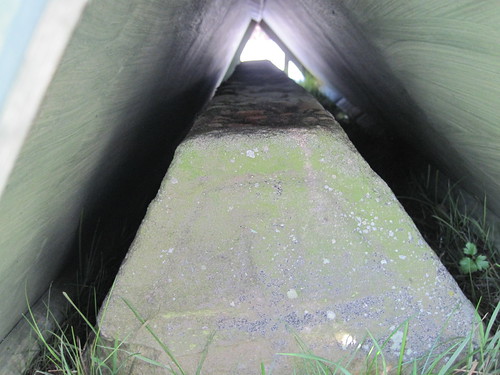On either side of the Northern end of the demolished viaduct is a type 23 Pillbox.
The western one is on an accessible part of the walkway


The eastern example is in a private field, so no close-up.

Pillboxes, Thorpe Thewles Viaduct
 Show on map
Show on map


















